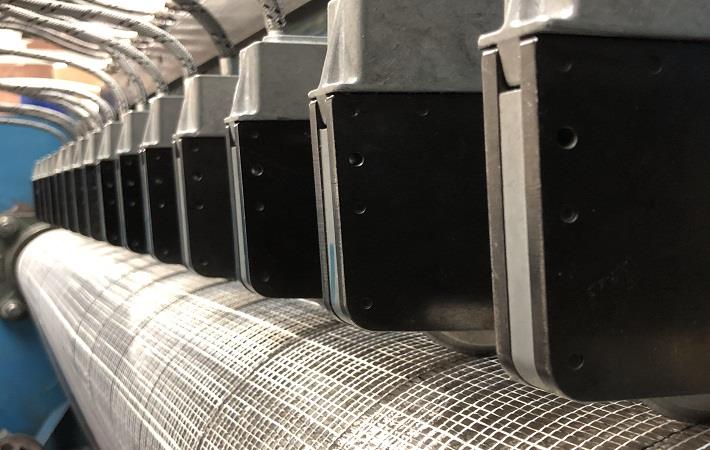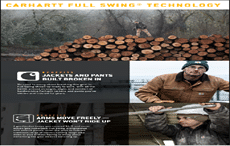
Multiaxial, stitched non-crimp fabrics (NCF) are constructed from numerous layers of carbon or glass fibres and these are held in place with a polyester thread. The fibres can be in a variety of orientations, for example +45/90/-45 degrees. One of the advantages of using multiaxial composites over woven materials is that they can increase efficiency in the lamination process as multiple layers of thicker fabrics can be laid up more quickly.
The use of multiaxial reinforcements in composite manufacturing is growing and this has been driven by the ability to slit these fabrics into a variety of tape widths. However, the construction of this type of material presents many challenges during the slitting process. It is vital to ensure a clean cut and accurate slit edge without compromising the fibre orientation and the handling characteristics of the materials. The tapes can be slit as narrow as 35 mm and multiple widths can be achieved from each roll. The advantage of mixing the slitting pattern within a single roll helps to ensure maximum utilisation from the material thus reducing waste.
Bindatex’s slit multiaxial tapes have been used throughout the aerospace, marine and automotive industries, ranging from the manufacture of high-performance components to carbon fibre wheels.
“We are well ahead of the game slitting difficult to cut materials and in delivering spliced tapes to very high precision. It’s fantastic to be working with this global manufacturer in the production of carbon fibre for a variety of applications,” said Chris Lever, Bindatex managing director in a press release by the company.
As well as being experts in the slitting of multiaxial carbon fibre and glass products, the company has been at the forefront of precision narrow width slitting of uni-directional (UD) composite tapes for innovative aerospace applications. It has also successfully developed the capability to produce ‘Lay-ready’ thermoplastic splices in UD tapes that are manufactured with Peek, Paek and Pekk polymers.
The development in proprietary technology will enable Bindatex to deliver defined spool lengths which can help to increase its customers’ productivity on automated fibre placement (AFP) and automated tape laying (ATL) equipment.
Bindatex has vast experience in cutting composite carbon and glass fibre prepreg materials in diverse formats including unidirectional (UD) tapes and traverse wound spools; thermoplastic and thermoset carbon fibre prepreg; woven fabrics; multiaxial fabrics and non-woven materials.
Through collaboration with customers, Bindatex has been able to provide innovative solutions to known problems with thermoplastic UD tapes which has helped to aid further adoption of these next generation composite materials. (PC)
Fibre2Fashion News Desk – India

